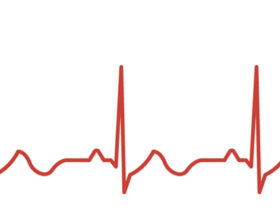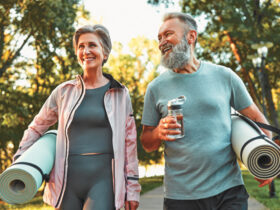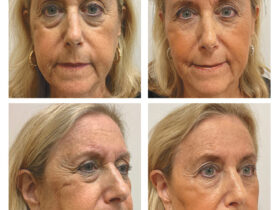By Kathy V. Verdes, APRN, A-GNP-C
 Southwest Florida’s year-round sunshine and pristine beaches make it a paradise for residents and visitors alike. However, this tropical paradise comes with a hidden danger that many underestimate: intense ultraviolet (UV) radiation that poses serious health risks throughout the year. Understanding UV safety isn’t just a summer concern in Southwest Florida—it’s a daily necessity for protecting your skin and overall health.
Southwest Florida’s year-round sunshine and pristine beaches make it a paradise for residents and visitors alike. However, this tropical paradise comes with a hidden danger that many underestimate: intense ultraviolet (UV) radiation that poses serious health risks throughout the year. Understanding UV safety isn’t just a summer concern in Southwest Florida—it’s a daily necessity for protecting your skin and overall health.
The Unique UV Challenge of Southwest Florida
Southwest Florida’s location near the 26th parallel places it in one of the highest UV exposure zones in the continental United States. The region experiences intense UV radiation levels that often reach “very high” to “extreme” categories on the UV Index scale, even during winter months. The combination of direct sunlight, reflection from white sand beaches, and year-round outdoor activities creates a perfect storm for UV overexposure.
Unlike northern climates where UV concerns are seasonal, Southwest Florida residents face consistent UV threats. The sun’s rays are strongest between 10 a.m. and 4 p.m., but even morning and late afternoon exposure can be significant. Cloud cover provides little protection, as up to 80% of UV rays can penetrate through clouds, creating a false sense of security on overcast days.
Understanding the Health Risks
Prolonged UV exposure leads to both immediate and long-term health consequences. Short-term effects include painful sunburns, heat exhaustion, and increased risk of dehydration. However, the cumulative effects of UV exposure are far more concerning. Chronic sun exposure accelerates skin aging, causing wrinkles, age spots, and leathery skin texture that can make individuals appear years older than their actual age.
More seriously, Southwest Florida has one of the highest rates of skin cancer in the nation. The three main types of skin cancer—basal cell carcinoma, squamous cell carcinoma, and melanoma—are all directly linked to UV exposure. Melanoma, the deadliest form of skin cancer, has been increasing in incidence, particularly among younger adults who may have experienced severe sunburns during childhood.
UV radiation also affects eye health, contributing to cataracts, macular degeneration, and pterygium (growths on the eye’s surface). The immune system can also be compromised by excessive UV exposure, reducing the body’s ability to fight off infections and diseases.
Essential Protection Strategies
Effective UV protection requires a multi-layered approach. Sunscreen is the first line of defense, but not all sunscreens are created equal. Choose broad-spectrum sunscreens with an SPF of at least 30 that protect against both UVA and UVB rays. Apply generously—most people use only 25% of the recommended amount—and reapply every two hours or immediately after swimming or sweating.
Protective clothing is equally important. Lightweight, long-sleeved shirts, wide-brimmed hats, and UV-blocking sunglasses should be standard outdoor attire. Look for clothing with UPF (Ultraviolet Protection Factor) ratings for maximum protection.
Timing and seeking shade are crucial strategies. Plan outdoor activities for early morning or late afternoon when UV levels are lower. When shade isn’t naturally available, create it with umbrellas, canopies, or pop-up shelters.
Special Considerations for High-Risk Individuals
Certain individuals face elevated risks and need extra precautions. Fair-skinned people, those with numerous moles, individuals with a family history of skin cancer, and people taking photosensitizing medications require heightened vigilance. Children are particularly vulnerable, as severe sunburns during childhood significantly increase lifetime skin cancer risk.
Regular skin self-examinations and professional skin screenings are essential for early detection. The “ABCDE” rule helps identify suspicious moles: Asymmetry, Border irregularity, Color variation, Diameter larger than a pencil eraser, and Evolving characteristics.
Making UV Safety a Lifestyle
Living safely in Southwest Florida’s intense sun requires making UV protection a daily habit, not just a beach day consideration. This includes year-round sunscreen use, protective clothing choices, and regular skin health monitoring. The key is consistency—sporadic protection won’t prevent cumulative damage from daily exposure.
Remember that UV safety is an investment in your long-term health and appearance. The habits you develop today will determine your skin’s health and appearance for decades to come.
Naples Clinic: Your Partner in Skin Health
At Naples Clinic, we understand the unique challenges of living in Southwest Florida’s intense sun. Our experienced team is dedicated to helping you maintain healthy skin through comprehensive skin cancer screenings, preventive care education, and treatment options. Don’t wait for problems to develop—proactive skin health management is the best defense against UV damage. Contact Naples Clinic today at 239-384-9392 to schedule your consultation and take the first step toward lifelong skin health protection.
Are you ready for a consultation?
Your treatment will be performed by a Certified Nurse Practitioner. Schedule your appointment now!
7385 Radio Road; Ste., 104, Naples FL 34104
(239) 384-9392
www.Naples-Clinic.com









